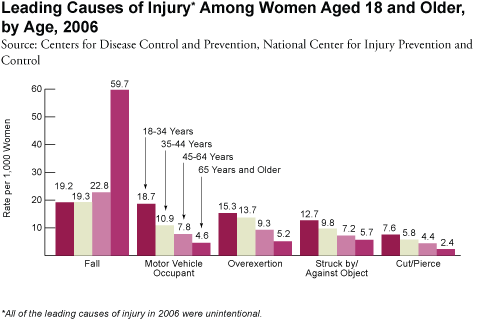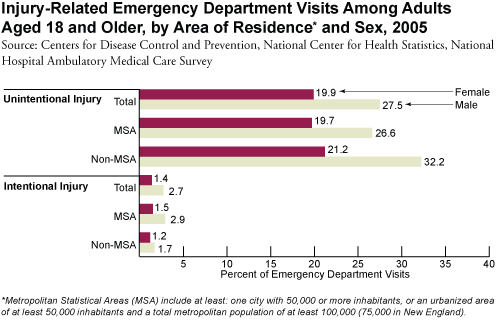The study by Professor Kruk, quoted in this article, also shows children and parents need at least a 40% amount of contact to maintain a parental bond. If this is not the case, these bonds diminish over time and children suffer causing the access parent and child to drift further apart. The normal contact given by family courts is 14%. (about 4 days a month). Superior Court Judges in Canada are responsible for this social engineering nightmare causing undue emotional trauma and poverty to children. This era, looked back on from the future, will be viewed with people shaking their heads and wondering how it could have been tolerated for so long.
I would recommend more research in the area of how a presumption of equal shared parenting with co-residency will reduce divorce rates. This has been noted in some jurisdictions. The following are some older references: (Dr. Margaret F. Brinig, Notre Dame Law School, Notre Dame, Indiana; Dr. Douglas W. Allen, Burnaby Mountain Professor of Economics, Department of Economics, Simon Fraser University, Vancouver, British Columbia; Dr. Sanford Braver, Department of Psychology, Arizona State University, Tucson, Arizona, Divorced Dads: Shattering the Myths, 1998; F. H. Buckley, Associate Dean, Foundation Professor of Law, George Mason School of Law: Executive Director George Mason Law and Economics Center, George Mason University, Arlington, Virginia.)
Also note that during this recession divorce rates will show a drop. Divorce is as much a function of economics as it is about interpersonal relationships. The vast majority of the demise of these unions are started by the female. One web site shows the applicant in 75% of Canadian divorces as the woman. In the USA it is 66%. Why? In the no-fault era are the pastures looking that much greener elsewhere? If so the dream of these pastures fails the litmus test of satisfaction in the vast majority of cases as second marriages or co-habitations have a higher rate of failure that the first time. Real abuse is only prevalent in a small number of cases.
Since the era of feminist inspired no fault divorces and the move from the equality notion of feminism to the current view of all women are oppressed by the patriarchy and, therefore, all men are abusers and oppressors, a cult of ideology has inspired, or rather brainwashed, many women into believing they are better off without their husbands. This may again be the oversimplification of these somewhat and somewhere mystical greener pastures. The true manifesto of these hardcore victim feminists are a woman can only be free if they take up with another woman. Its an interesting scenario given the DV rates between Lesbians is 40% higher than hetero couples. We are now seeing science fiction come to life in movies of two women getting sperm from their own stem cells. Spare me the incredulity of this scenario in which men are not needed. I did a little piece in my blogs with ideas from a commenter in creating a fictionalized feminist country in Africa where they don't need men and under UN auspices the country was protected for 10 years (by men mostly by the way). At the end of 10 years the protective mandate ended and they had their own Victim Feminist Defence Force (VFDF). I had set up odds in Las Vegas for the betting crowd to guess how many New York Minutes it would take for African Tribal Politics to overtake these Victim Feminists and truly oppress them. In any event it would prove that some parts of the Patriarchy are still needed and some elements of the biological differences are indeed not to be feminized.
It is my view that the whole idea men should be feminized and be more like women is to quote an old street slang saying "out to lunch." How many soldiers, police officers, firefighters, construction workers, miners, sailors, air force, et al are feminized. In the above roles not many feminized men or indeed feminists would last and they would be washed out very quickly. Those women who do try these roles fast become part of the masculine culture or they are not going to survive psychologically. One could say they are masculinized! They are still in every sense a woman, have their feminine attributes but in carrying out their role in these physically and psychologically challenging jobs have to adapt in a Darwinian form and manner to achieve success. In this case the adaptation would be first mental and then physical. Has anyone done a study on the relative levels of Testosterone in women in these kinds of jobs relative to the general population of females. Do they rise while performing their duties? If there is a rise is it diurnal, weekly, monthly, permanent while undertaking the job. My experiences with parenting full time for 10 years would suggest we are a highly adaptable species and just as adrenaline is produced in times of "fight or flight" perhaps our hormone balance can adjust when necessary. I will also posit not one victim feminist would ever apply for these jobs. They are also then Life Boat Feminists as they want to get in the lifeboats with the children to avoid the dirty work or jobs, that by the way pay more, or indeed if the metaphorical ship is sinking. Can you just picture these brave and heroic Victim/Lifeboat feminists on the deck of a sinking ship saying no I'll stay behind with you patriarchal oppressors. Not likely.
I was a stay-at-home dad for 10 years and I will put my nurturing skills up against any female any where on the planet. No one had to feminize me. Nature took its own course and I will posit Testosterone dropped and adapted me to this role while keeping me "manly." This mythology of oppression is bought hook line and sinker by law makers, judges, the media, advertisers, TV producers et al. It is, of course, rampant in the DV industry and it permeates magazines - which females buy by the thousands - to catch a whiff of their dreams. It says you should be empowered and stand on your own not next to your man. You can do better with your life if you are currently unhappy by getting rid of the oppressive man and piece of paper.
The dragon of feminist mythology is spreading throughout the world and has landed firmly in India, the second most populous nation on earth. So there you have one of the more fervent enemies of marriage and it is everywhere, not just as individuals but as an ideology and it will be tough to slay if it ever can. It is most prominent in the halls of higher education in women's studies courses, social worker courses, and there seems to be a preponderance of feminist female law professors (and male acolytes) who have no problem in lying to students, as Christina Hoff Sommers has reported, even in law course text books. Holy smokes how can that be the case?
Changing the Divorce Act to one of a presumption of equality and sharing is but one big step in that direction. It will be fought by these feminists as they believe they are, by divine right, the only proper carers for children and they will lose out on perceived entitlements like child/spousal support and all the government cheques. The latter will be the real reason not the best interest of the children. They will also use tax payer dollars to do so and are well funded. True feminists of the old school of equalism, drowned out by the most recent wave, will be less visible but many will agree its time has come. In Belgium it was a feminist minister in the government who steered equal/shared parenting into law.
Other factors enunciated by me elsewhere in this blog and more comprehensively by Dr. Jayne Major, in The Macabre Dance of Family Law Court, Abnormal Psychology, and Parental Alienation Syndrome can help to salvage marriages. Clearly a first step after a party decides they want a divorce is individual counselling first followed by joint counselling, if appropriate. Given the serious social context of divorce and its cost to the nation this would be compulsory.MJM

NO. 72 | July 1, 2009 |
If you have received this message in error, click Unsubscribe to be removed from the list.
 |
Equal Parenting Finding an equitable arrangement in divorce is important. Better still are parents who can stay together
None of this is meant to downplay the shift toward equal parenting in divorce. This is a positive development, which ironically manages to give preferential treatment to two parents in divorce, by correctly identifying that this matters to children, even when families break down. Equal parenting in divorce would be a positive accomplishment for families that fail. However, that accomplishment should never overshadow the bigger picture—that of striving toward marriages that stay together, not by force, or by gritting teeth, but rather because the marriage is happy and thriving, even after hitting a bump in the road. Endnotes
[2] House of Commons Canada. (2009) C-422: An Act to amend the Divorce Act (equal parenting). Ottawa: Public Works and Government Services Canada. Retrieved June 10, 2009 from [3] Kruk, E. (2008). Child Custody, Access and Parental Responsibility: The Search for a Just and Equitable Standard, Father Involvement Research Alliance (FIRA), University of Guelph, p. 24. Retrieved June 10, 2009 from http://www.fira.ca/cms/ [4] Ibid, p. 9. [5] Ibid, p. 11. [6] Amato, P. (1994). Life-Span Adjustment of Children to their Parents’ Divorce. The Future of Children, 4 (1), p. 145. [7] Waite, L., Browning, D., Doherty, W., Gallagher, M., Luo, Y. and Stanley, S. (2002). Does Divorce Make People Happy? Findings from a Study of Unhappy Marriages. New York: Institute for American Values, p. 5. Retrieved June 10, 2009 from http://www.americanvalues.org/ [8] Ibid, p. 4. [9] Department of Justice Canada (2004). The Early Identification and Streaming [10] Mrozek, A. and Walberg, R. (June 2009). Private choices, public costs: How failing families cost us all, Ottawa: Institute of Marriage and Family Canada, p. 10. [11] Stack, S., Eshleman, J.R. (May, 1998). Marital Status and Happiness: A 17-Nation Study. Journal of Marriage and the Family, 60 (2) pp. 527-536. Permission is granted to reprint or broadcast this information with appropriate attribution to the Institute of Marriage and Family Canada |






No comments:
Post a Comment